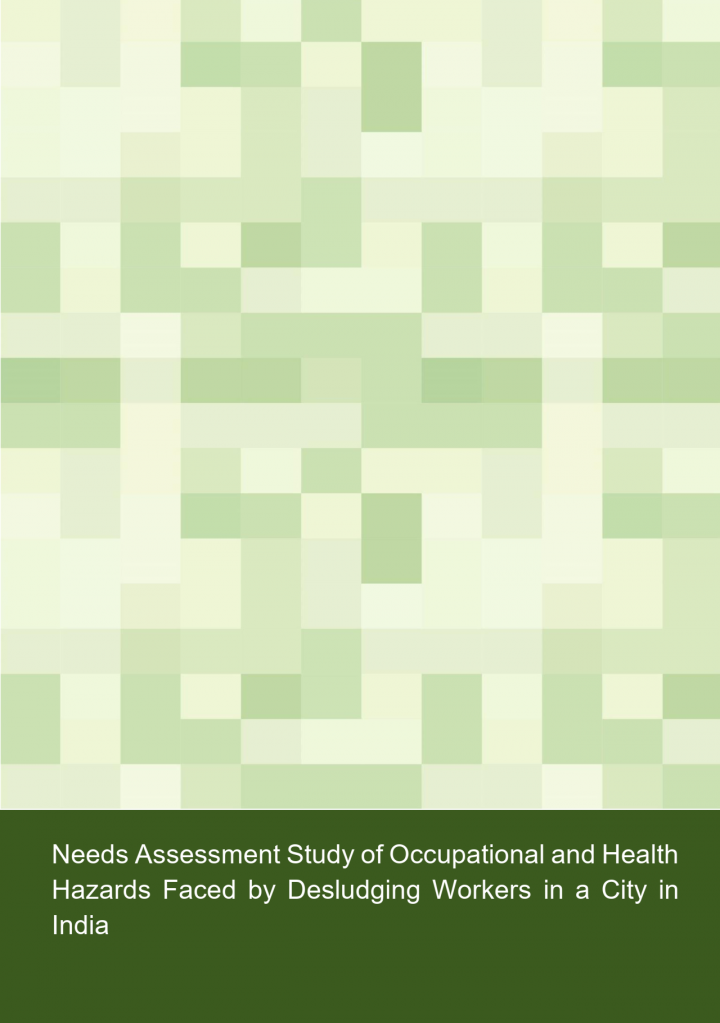Needs Assessment Study of Occupational and Health Hazards Faced by Desludging Workers in a City in India
IIHS (2019)

Published in: 2019
Pages: 144
Publisher:
IIHS
Author:
IIHS
Uploaded by:
SuSanA secretariat
Partner profile:
common upload
835 Views
14 Downloads
Safe collection, handling and transport of fecal sludge is an integral part of septage management. Limited attention has been paid to the safe collection, transport, disposal and treatment of human excreta from septic tanks. Motorised emptying and transport involves a truck with a standalone or mounted vacuum pump along with a storage tank that is used to empty and transport septage. Typically, these desludging trucks operate within the informal sector, so there is limited official data available on their numbers, operations, coverage and disposal practices. The general observations made were that the process of desludging has been carried out in the absence of any safety gear, putting the workers’ health at risk, and the septage collected is dumped in drains, waterways, open land and agricultural fields, critically impacting the environment and public health. To gain a deeper and clearer understanding of the occupational practices of desludging and safety of workers, a study was undertaken in one city in India.
The objectives of the study were to:
• Undertake in-depth analysis of current desludging practices (including measures for occupational safety) with an aim to understand resultant safety and health hazards for desludging workers
• Understand the underlying reasons (knowledge, behaviour etc.) for occupational practices and existence of hazards
• Understand the relevance and sufficiency of legally-mandated PPE and understand challenges for usage
• Develop a preliminary set of recommendations for improvement of OSSs
Bibliographic information
IIHS (2019). Needs Assessment Study of Occupational and Health Hazards Faced by Desludging Workers in a City in India. IIHS
Filter tags
East Asia & Pacific English Import to Sanitation Workers Platform Urban (entire city)















